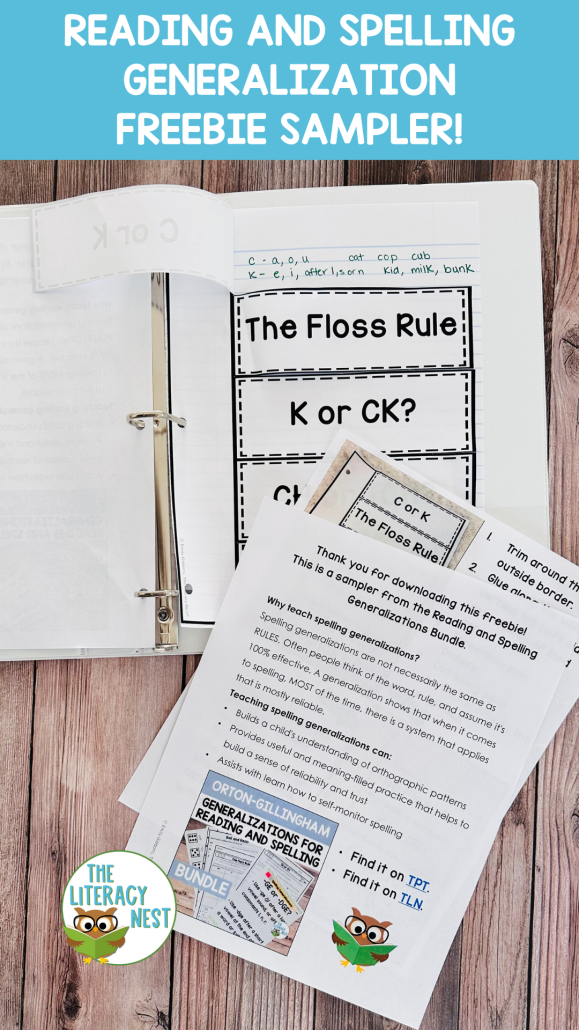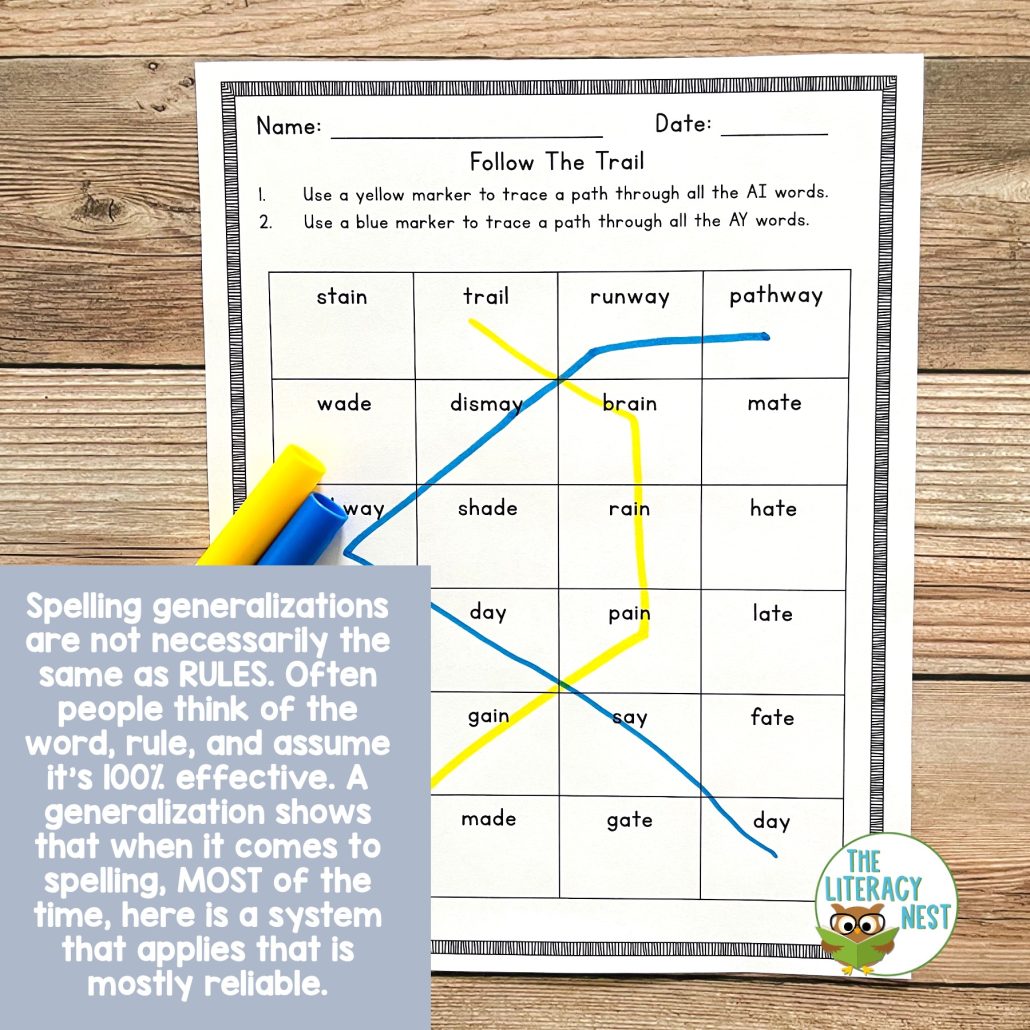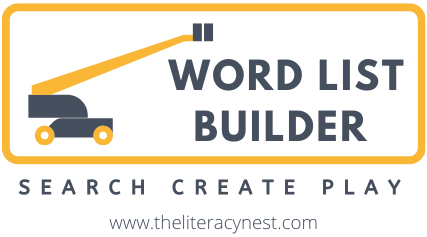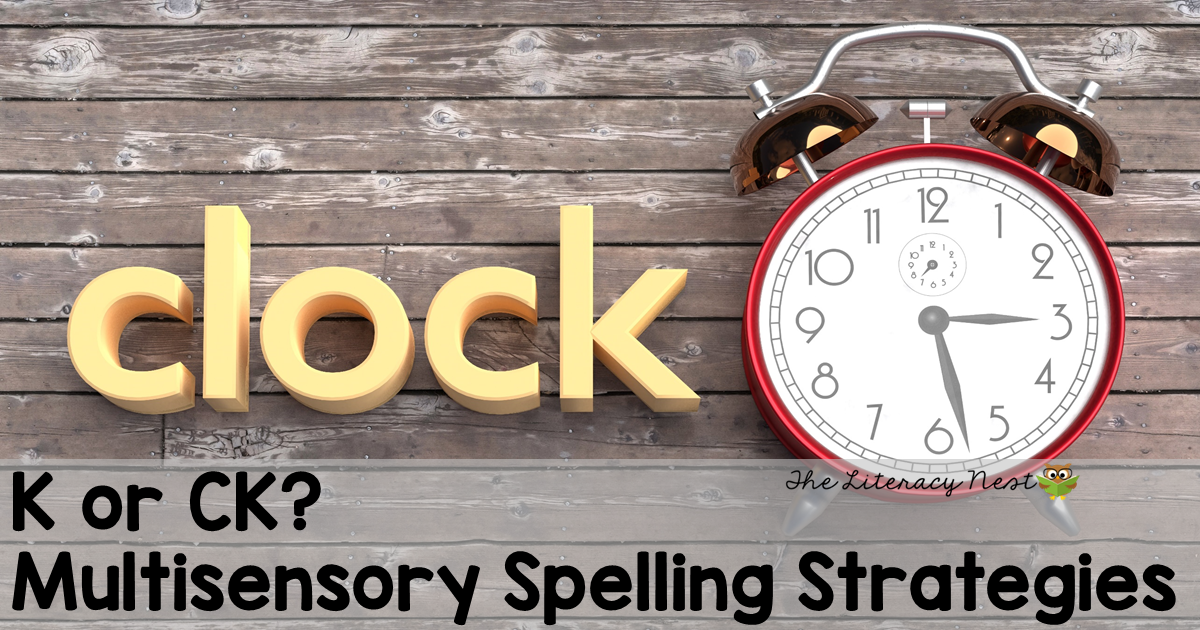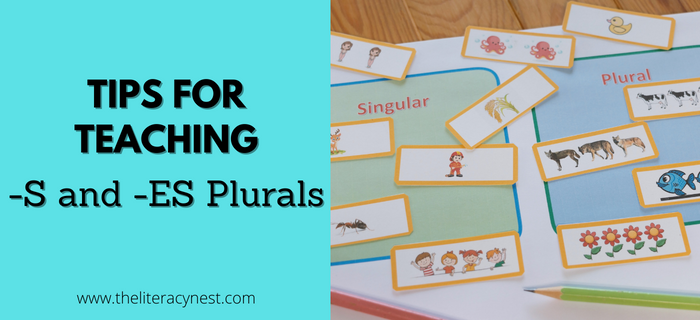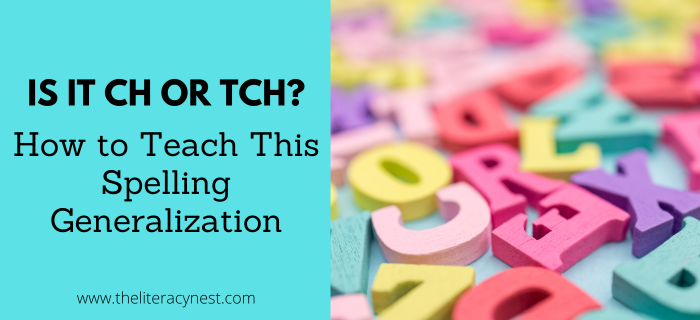Is it AI or AY? Spelling With Long A Vowel Teams
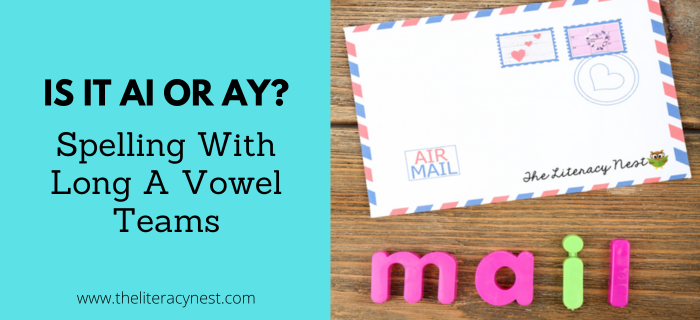
Is it ai or ay? Decisions, decisions.
As students expand their knowledge of vowel teams, the number of spelling choices increases. Often, students need some tools for determining which spelling to use. In reading, we generally teach the possible sounds that a letter or combination of letters can make and teach students about the frequency with which these options occur. If the most common sound doesn’t make a real word, students can try another sound choice. But, spelling can be a bit more complicated.
AI or AY Spelling Generalization
Many spelling generalizations having to do with vowel teams focus on the position of the vowel within the word. This generalization tells us that ai is found at the beginning or middle of a syllable and ay is found at the end of a syllable. Ai will never come at the end of a word.
Some words that follow this generalization include:
rain paid aim play day
It is helpful to specify syllables rather than words because in a compound word, ay may occur at the end of the first syllable as in the words:
haystack playpen daytime
It is worth noting that students will need to focus on the base word to effectively utilize this spelling generalization. Once a word has suffixes added, ay may no longer be at the end of the word and some suffixes don’t add an additional syllable.
In order to teach this generalization, it is helpful for students to:
- know the vowel team syllable types
- be familiar with locating the baseword
- be able to segment a word of 4 or 5 sounds
I find it is generally most helpful to teach ai and ay separately in reading first. Once students are comfortable and familiar with the phonogram, they are ready for the spelling generalization. It is important to refrain from giving words ending in ai and ay in dictation until this generalization has been taught. It is very important that teachers use caution when assigning words for dictation.
Remember: There is no way for the student to accurately determine if a long a sound in the middle of a word is spelled a-e or ai. Teacher prompts such as these 3 words will all use vowel teams can help to remove the uncertainty. The frequency of spelling patterns can also be helpful. Visuals such as a frequency chart, a picture story, or a chart of words that fit different patterns can help these tricky spelling decisions become more automatic.
Students can use some guiding questions to help them make a decision when writing a new word:
- What is the base word?
- Where in this word do I hear the long a sound?
- If the long a sound is at the end of the word or syllable, use AY.
- If the long a sound is at the beginning or middle of the word or syllable, consider ai and a-e.
- NOTE: A-E is more common, but a general prompt to use vowel teams can allow students to apply this spelling generalization and practice independently.
Download this printable guide for teaching AI or AY!
Download our Reading and Spelling Generalizations freebie sampler! It includes mini posters, a note-taker, and a handy cheat sheet with links to blog posts and a video with teaching tips!
Some Fun AI or AY Teaching Ideas Include:
1. Sorting
You can sort words by spelling or sort pictures by vowel sound location to build phonemic awareness skills.
2. Start from the known
Although this is likely the first vowel generalization, students should already be familiar with the k/ck and ch/tch. Reviewing how tch and ck are found at the end of syllables may help to reinforce this rule.
3. Review activities
Spending just a couple of minutes each lesson working with this generalization will help to solidify the learning. Have the student fill in the blank with ay or ai to finish spelling words. Ask them to segment a word into its sounds using counters or blocks and decide whether to use ai or ay.
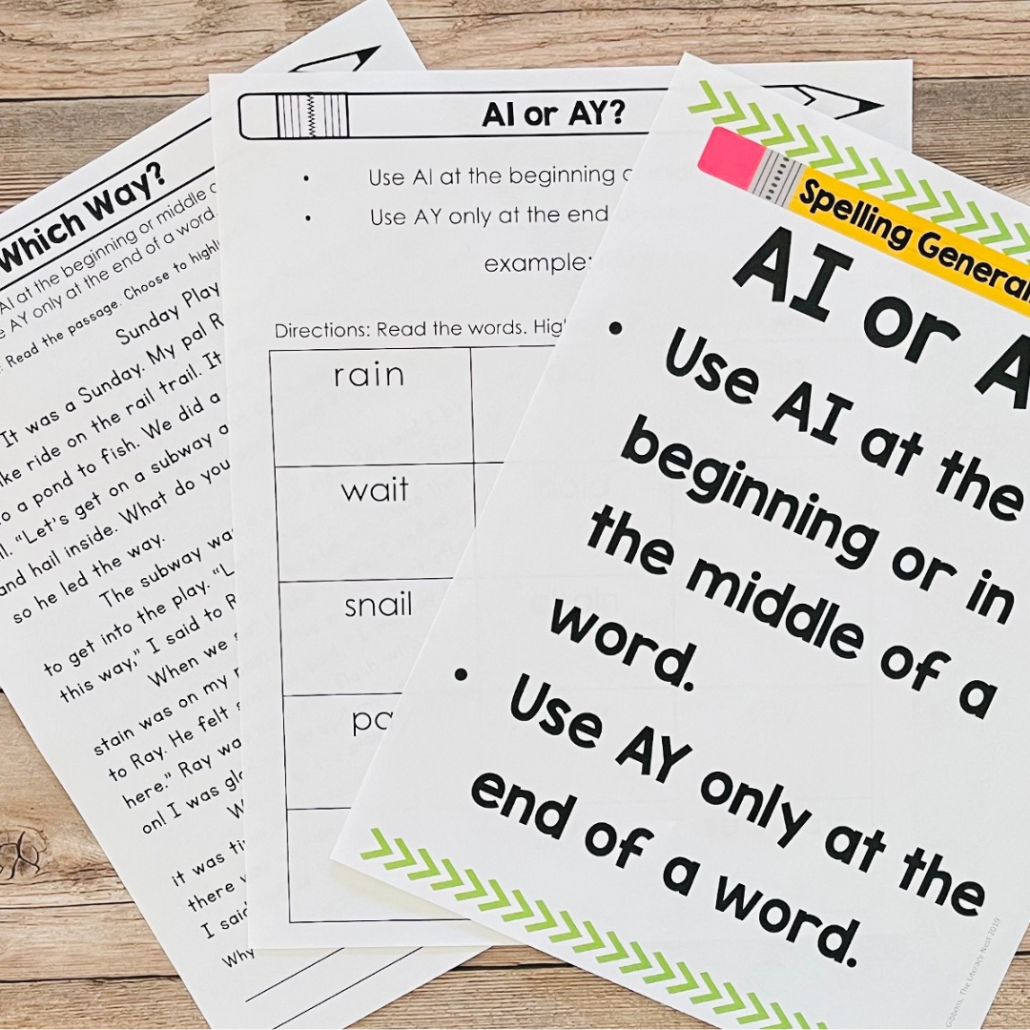
4. Dictation
Make sure to avoid using ai and ay words in dictation (after both of them have been taught) until you have taught this generalization. Avoid mixing a-e and vowel team words in dictation. Use a teacher hint or frequency to help students make a spelling choice. Have your student practice finding the base word and applying the spelling generalization before adding the suffix.
5. Games
Play games where the student not only needs to read but actually make spelling choices between ai or ay. Make a word list that includes words with ai and ay. Have the student spell a word. If they are able to spell the word correctly, they can roll a die and move along a game board. This basic principle can be adapted in a number of ways.
Play ai or ay Jenga, Don’t Break the Ice, or any of the other repurposed games in your collection. Even Go Fish or Concentration can be presented with a spelling twist.
6. Spiral and Review
I recommend reviewing this spelling generalization before teaching other vowel team spelling generalizations. I find that each spelling rule lays the foundation for those that follow.
Check out these Vowel Teams AI & AY, Orton-Gillingham Multisensory Phonics Activities!
Incorporating ai/ay practice into SOS review words is an excellent way to keep this learning fresh with the previously mentioned provisos. Prompting a student to use a vowel team or vowel-consonant-e pattern is better than allowing them to practice an incorrect spelling. If there are few concepts needing intensive review, cycling through spelling generalizations is always an appropriate review.
As new learning is added to your student’s repertoire, especially adding affixes, it is often helpful to review the ai/ay generalization to help situate it within the larger context of English spelling.
7. Verbalize
It is very valuable to have students explain the spelling generalization in their own words. Another way to encourage students to have a deep understanding and ability to explain the generalization is to ask them why they made the spelling choice that they did. For example, in the word train, you could ask the student why they used ai, or why they chose to use ay in the word playing or trays. This will often expose any misunderstandings or areas that need clarification.

Teaching and practicing this spelling generalization will not only provide students with learning differences a valuable tool for spelling, but also through many repetitions of correct spelling with the aid of this guideline, build a repertoire of known words and an overall orthographic awareness.
AI-AY Spelling Rules for Orton-Gillingham Lessons
Looking for systematic and explicit phonics instruction? This resource teaches the spelling generalization AI-AY. It is compatible with Orton-Gillingham lesson plans, dyslexia interventions, and other reading interventions. If you are an Orton-Gillingham tutor or teacher, these will work well with your lesson plans! They are suitable for 1:1, small groups, online teaching and tutoring, and distance learning.
You can grab it in The Literacy Nest Shop or on TpT.
If you are seeking more advanced practice, check out this Spelling Generalizations bundle.
Are you looking for a list of words that follow the AI or AY spelling generalization? Word List Builder has got you covered!
Save time searching for words that follow the AY or AI spelling generalization! Create customized and meaningful review, build your folder of words, create templates and games, and much more in Word List Builder.


